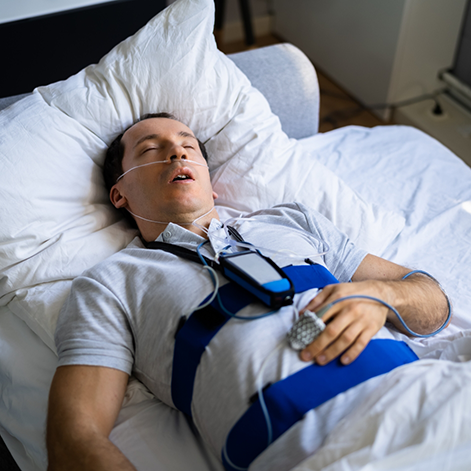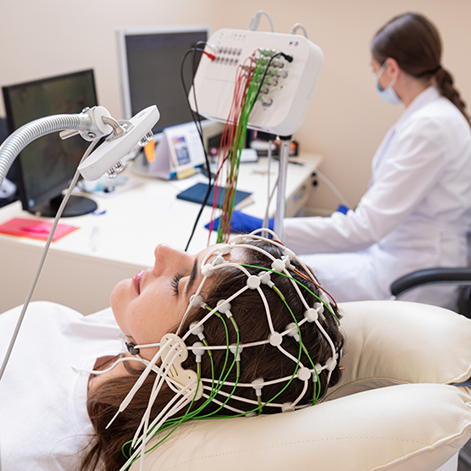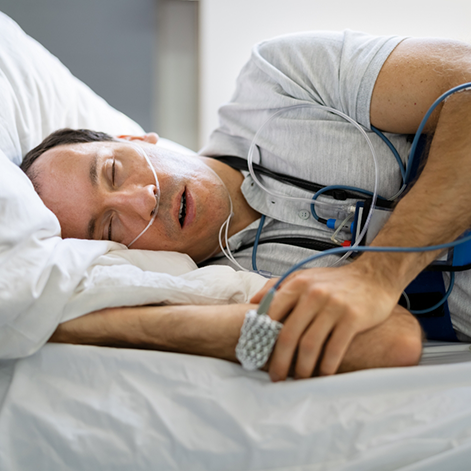Sleep Testing for Obstructive Sleep Apnea Concord
Getting to the Bottom of Your Sleep Disorder

You’ll need a proper sleep apnea diagnosis before you can begin receiving treatment. There are two main ways to do this: an in-lab sleep test or a take-home sleep test. Our team at New Hampshire Airway Wellness Center can help you make the necessary arrangements to have either type of sleep test performed; we want to be sure that you can get the reliable diagnosis you need. Reach out today to set up a consultation with Dr. Homsi and begin working towards better sleep!
Why Choose New Hampshire Airway Wellness Center for Sleep Apnea Testing?
- Dedicated Sleep Dentist with Several Years of Experience
- Happy to Accommodate In-Lab or Take-Home Testing
- Highly Educated and Compassionate Team That Puts Patients First
Do I Need a Sleep Test?

You should seek a sleep study if you have any reason to believe you have sleep apnea. There are several symptoms that could indicate its presence, some of which aren’t very obvious, including:
- Snoring loudly every night
- Feeling depressed or experiencing mood swings
- Excessive daytime fatigue and grogginess
- Inability to focus or concentrate
- Poor memory
- Insomnia
If any of these symptoms apply to you, don’t hesitate to have a sleep study performed so that you can obtain a diagnosis and then treatment.
How an In-Lab Sleep Test Works

If you opt for an in-lab sleep test, you’ll spend the night at a special sleep laboratory or clinic. During this overnight visit, various instruments will be used to measure your brainwave activity, your heart rhythm, your breathing patterns, your blood oxygen levels, and other things that could be occurring inside your body and affecting your sleep. This information is then used to determine whether the cause of your sleep disturbances is truly sleep apnea-related, or due to something else.
One of the advantages of choosing this method is that it tends to be better for patients with complex medical histories, major heart conditions, or even neurological conditions. Additionally, there’s the added benefit of having an in-lab technician walk you through the whole process and keep an eye on you throughout the night, which is helpful if any adjustments to the equipment need to be made.
How a Take-Home Sleep Test Works

Take-home tests involve a simplified breathing monitor that you’ll wear to bed in the comfort of your own home. You’ll receive clear instructions for how to set up and use this device, but rest assured, it’s fairly simple. Generally, there’s a small probe that will be placed over one of your fingers, with additional sensors being placed on your chest. You may also need to wear a small mask over your nostrils. These various sensors will gather information about your vitals while you’re sleeping, and the data is then later analyzed by a sleep physician.
The most obvious benefit of a take-home test is being able to sleep in your own bed, as opposed to an unfamiliar environment. For many people, this makes it easier to fall asleep, which can help make the readings more accurate. Plus, take-home sleep tests also tend to cost less than ones performed in laboratories.
